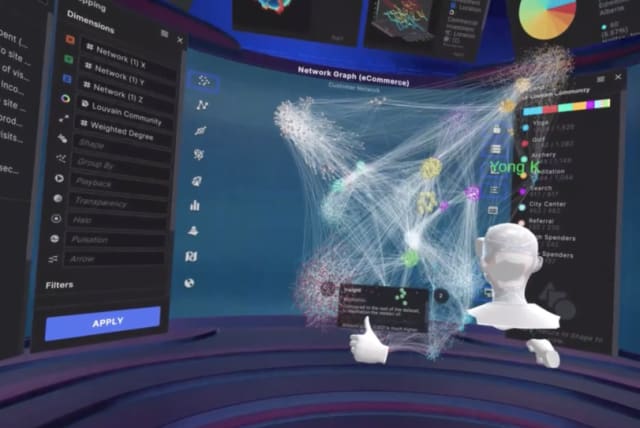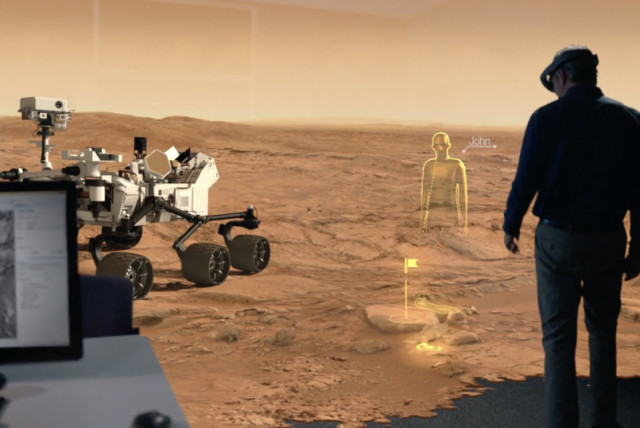NASA engineers create VR software to visualize a universe of data

Now, a piece of datum wasn't a mark on a screen. It's a thing that can be held, moved, and placed.
After an experiment that turned flat, 2D images of Mars into an interactive 3D landscape, the manager of the Human Centered Design Group at NASA's Jet Propulsion Laboratory, Scott Davidoff, realized there was a better, more immersive way to interact with data. Experiencing data in 3D boosts the ability to quickly understand it, recognize patterns, and see correlations within the data.
NASA announced the virtual reality (VR), 3D data software in an article on their website this month.
Turning flat, 2D images from the Mars Curiosity rover into an experienceable, 3D virtual reality landscape was far from the end of Davidoff's VR journey. He reasoned that that same technology could enormously improve how people use data.
"When you look at a network diagram as a system in 3D, it turns out your perception does something different," the NASA article quotes Davidoff as saying. “We made a data world where an analyst could look at any science or engineering problem and see patterns and correlations more clearly than they can in a flat version.”
Partnering with the California Institute of Technology's Ciro Donalek and George Djorgovski who were conducting similar research, Davidoff created a software that could render data points in a 3D environment. Suddenly, a piece of datum wasn't a mark on a screen. It became a thing that could be held, moved, and placed. It became possible to literally get a different perspective on one's data.
“You can start getting insights from your data right away because it's literally drag and drop,” Donalek told NASA.
Variety of uses for the software
Additionally, the software is designed to be able to be used on a desktop as well as on a VR system, allowing it to be used in more practical, everyday scenarios and can be used in any field that deals with large amounts of data. For instance, the article notes that it's most commonly used in "banking, retail, and medical research."
It goes on to explain that the software is just as at home examining trends in the stock market as it is analyzing data from the surface of another planet.
Jerusalem Post Store
`; document.getElementById("linkPremium").innerHTML = cont; var divWithLink = document.getElementById("premium-link"); if (divWithLink !== null && divWithLink !== 'undefined') { divWithLink.style.border = "solid 1px #cb0f3e"; divWithLink.style.textAlign = "center"; divWithLink.style.marginBottom = "15px"; divWithLink.style.marginTop = "15px"; divWithLink.style.width = "100%"; divWithLink.style.backgroundColor = "#122952"; divWithLink.style.color = "#ffffff"; divWithLink.style.lineHeight = "1.5"; } } (function (v, i) { });

